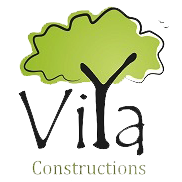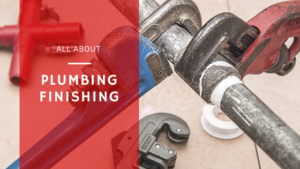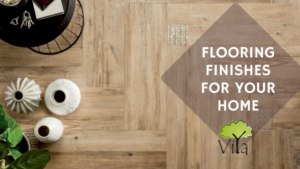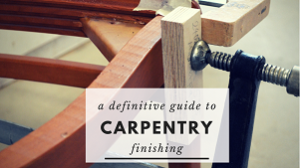Plumbing Finishing in House Construction
A new house may look beautiful inside out. But minor defects like unleveled bathroom floor or insufficient drainage mechanism can pose serious flaws in future. For example, seepage from bathrooms can damage interior walls and can turn them to breeding ground for infection causing microbes. To build a house that imparts you good health and happiness, you need to give extra importance to plumbing finishing.
What are Plumbing Finishing?
Plumbing Finishing or Plumbing Finishes refers to every work pertaining to plumbing and sanitary in a new house. Basically, it takes care of all aspects that involve movement of water. Whether it be setting up a pump to draw water from a well, getting hot water for shower or waste water disposal. Furthermore, design and maintenance of toilets is another major area that falls under plumbing finishes.
How to implement Plumbing Finishes?
Broadly, plumbing finishes involves two major works- laying of pipes and installation of sanitary wares. To implement these finishes efficiently, you have to get into the details of following plumbing aspects:
1. Flow of water:
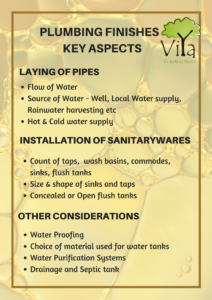
A thorough planning is required to identify areas in the house for best use of water from different sources. For example, providing bore well water for toilets and well water for kitchen ensures adequate utilization of both. Designing and implementing necessary plumbing work from each of the water source to the planned end points is critical. Otherwise, there will be disappointments on a utility perspective once you start living in the new house.
Modern day homes opt for rainwater harvesting which act as an additional water source. The water from rainwater harvesting usually gets collected in a separate tank. This water is ideal for watering the garden, washing or as flush water in toilets. Whatever is the desired use of such collected rainwater, the plumbing design requirement in those areas should adhere to the harvested water tank.
The plumbing design also covers the need for hot water in different parts of home especially, bathrooms and kitchen. Provisions for flow of hot water should be planned well by laying heat conducting pipes in those area. Other places can have normal PVC pipes for cold water flow.
2. Sanitary Fittings:
Sanitary fittings refers to the taps, wash basin, sinks, commode, flush tanks etc. They help you to control the flow of water and efficiently use it in the house for different purposes.
In Kitchen
Plumbing finishes deals with the type and size of sink to be placed in kitchen depending on the need, preference and lifestyle of the family. Similarly, the choice of square or round corners, and the number of bowls and taps relates to the usage and effectiveness of kitchen sink. You should design and fix the kitchen tap in such a way that the water falls in the center of the sink bowl for the perfect convenience and utility.
A kitchen sink has to handle washing of cooking vessels and greased plates. Having hot water supply apart from cold water will help in faster cleaning. Some families opt for a second kitchen or a work area with a bigger sink to leave used plates and vessels for washing at a later point. Therefore, while designing and fixing taps for kitchen sinks, utmost care is needed to locate the sink bowls that require hot water and cold water for desired utility.
Read More: What should you take care of while designing a your kitchen?
In Toilets and Bathrooms
Toilet commode can have two types of flush tanks – concealed and open. Choose the flush tanks only after carefully considering the advantages and disadvantages of each type. Concealed ones are aesthetically appealing but at the same time, maintenance is extremely difficult as access is limited. Complex mechanisms usually equates to difficulty in the event of malfunctioning. So while choosing type of flush tanks, strike a balance between convenience and aesthetics.
Wash basins are integral part of a toilet and they come in different models. Mount it on a built up area to make it pleasing for the eyes. Or keep it exposed if the family chooses that way.The size of the bowl, the diameter, the area in which water falls, the distance between user and the spot where water falls etc determines the wash basin design.
In a bathroom, dry area and wet area needs some separation mechanism. You may use shower curtains or shower cubicles for this purpose; according to the budget and convenience of your family.
Bathrooms involve lots of water flow – through the pipes as well as on the floor. Because of which, the water can seep in through the walls and floor leading to damage of adjacent furnishing. Persistent dampness can cause cracked and swollen up wall paint or result in fungal growth on woodwork. To prevent this, it is advisable to waterproof the bathrooms prior to tiling of floors and walls. Waterproofing is an important aspect in plumbing finishes to protect your overall structure of the house.
Read More: Don’t miss these while you design your bathrooms
3. Exterior of the house
As said earlier, a house can have multiple water sources and evidently each of them requires a separate tank. The size of water tanks and the volume of water which it can hold differ for each use. The choice of water tanks for each source ranges from underground tanks, ground level tanks and overhead tanks (those installed on the roof).
Plumbing finishes design cover installations of multiple pumps to cater to different water needs in the household.
The design also takes care of the choice of the type of water tank for each use. There are several options in water tanks; cement and concrete tanks, ready made cement based tanks or plastic water tanks. The factors that helps you choose one over another are quality, thickness, ability to handle temperature, price, size and the amount of water the tank can hold.
Nowadays, water tanks that can withstand hot temperature are available. The quality of water remains unaltered during summer by using these type of water tanks. A family who don’t want to compromise on the quality of drinking water would definitely go for this even if it is a bit expensive. Of course, choose the nature of water tank according to the what you intend to use it for.
Water from some water sources, like bore well, may not be clean. Implementation of Water filtration system to clean and purify such water before domestic use comes under plumbing finishing design. In most cases, the water filter and purification mechanism is installed outside the house. The water is then directed for household usage.
4. Drainage
The plumbing finishing covers the design of drainage in a house. Typically, drainage mechanism involves allowing rain water and water that comes into the property to flow freely into the public drainage.
Apart from this, bathrooms and kitchen in a house also generate wastewater. An efficient plumbing design directs this waste water to flow into a sump tank. The sump tank allows the waste particles to settle down at the bottom and non waste water to seep down to the ground water gradually.
Similarly, septic tank design takes care of the toilet waste. Invariably, waste water drainage design also comes under plumbing design.
An efficient plumbing design takes care of all sort of water movement within the property. Whether it be fresh water, waste water or water running through the sanitary installations. It requires experienced plumbing contractors to achieve the efficient utilization of water needs of a house.
Contact Plumbing Finishing team at Viya for a state of the art plumbing design for your home.
YOU MIGHT ALSO BE INTERESTED IN:
